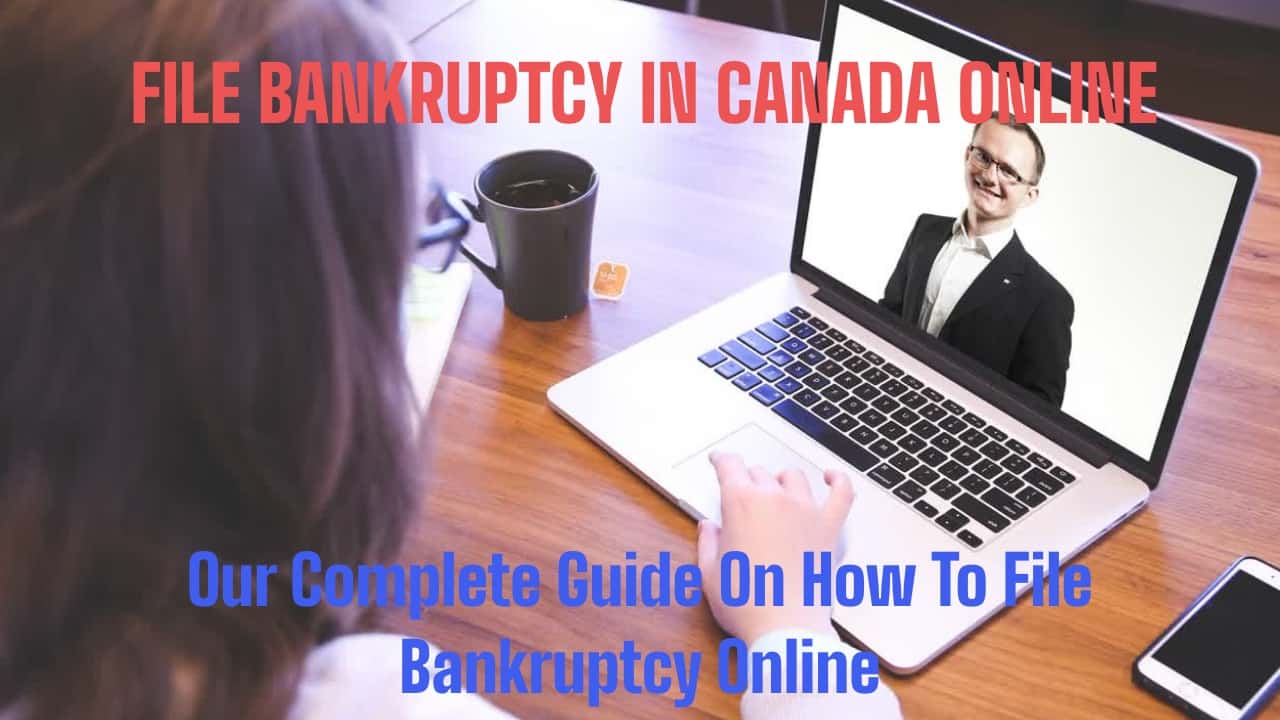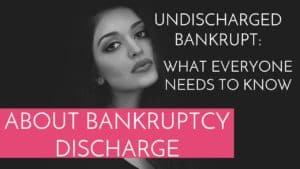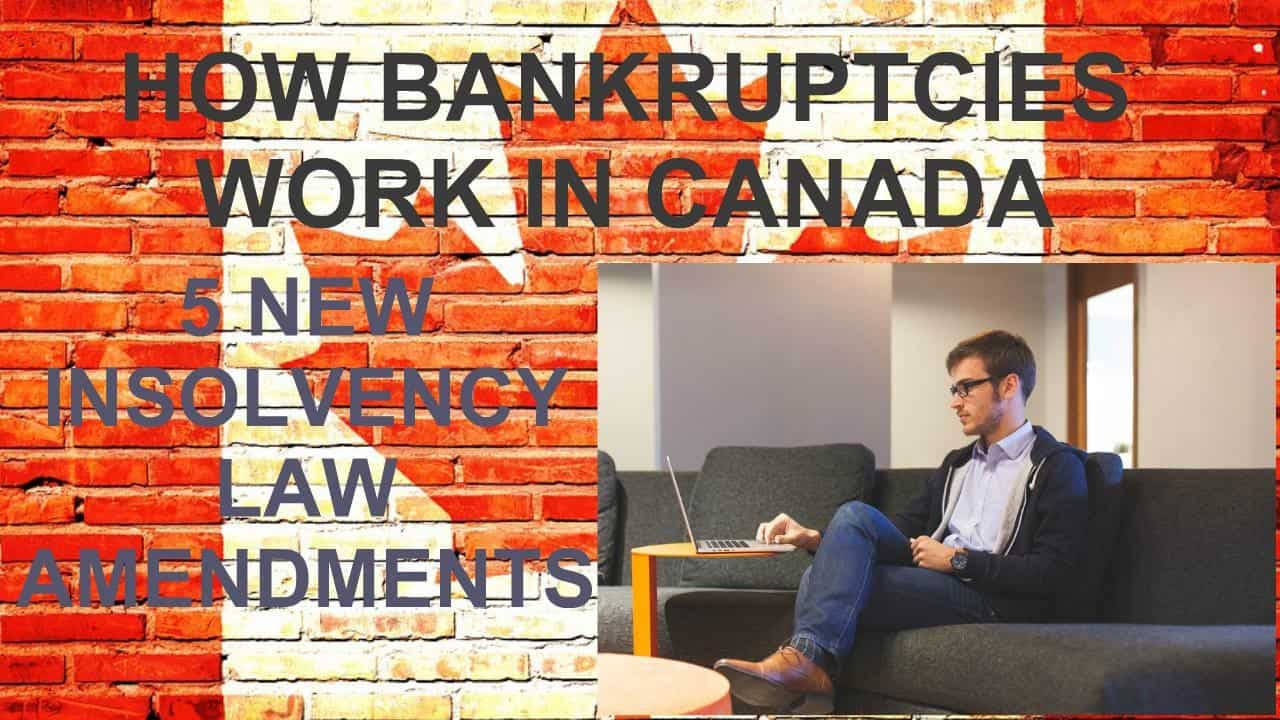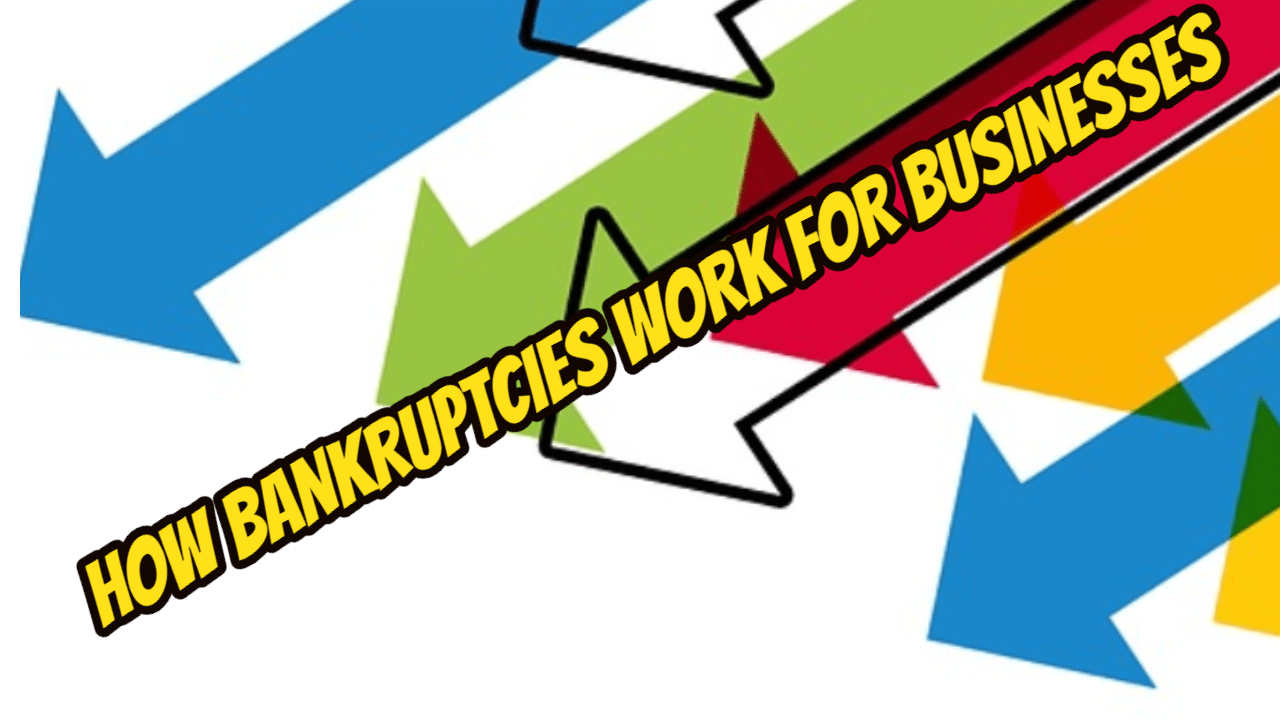We hope that you and your family are safe and healthy.
The Ira Smith Trustee Team is absolutely operational and Ira, in addition to Brandon Smith, is readily available for a telephone consultation or video meeting.
File bankruptcy in Canada online introduction
People have been asking us recently, “Can I file bankruptcy in Canada online?”. The most honest answer is yes, just not all alone with your computer and internet connection. Doesn’t sound very definitive, does it? That is because you cannot file bankruptcy yourself.
The only one the federal government authorizes in Canada to do bankruptcy filings is a licensed insolvency trustee (formerly called a bankruptcy trustee or a trustee in bankruptcy) (Trustee). The process itself requires anyone experiencing financial problems either themselves or with their company, needs to meet with a Trustee for an initial consultation.
However, since the onset of the COVID-19 pandemic and the lockdowns that have accompanied it since March 2020, the way a Trustee meets with people considering bankruptcy has changed. It has essentially gone online given the current operating environment. I will explain what I mean and how it might help you with your individual situation.
Can I file bankruptcy in Canada online?
Virtually anything and everything can be done online. The lockdown has increased our use of online purchasing. Whether it is clothes, office supplies, or toilet paper, it can all be ordered online and shipped to our homes. The taxi industry has been under assault for some time now from both Uber and Lyft.
The internet also includes a wealth of knowledge on thousands of different subjects. Financial topics are no exception. I find that anyone contacting me who is struggling with their, or their company’s financial problems, debts and paying their bills, including credit card bills, have already looked online for information and help to try to recover for their financial future.
Although people may not understand everything about insolvency and bankruptcy with all its nuances, which is to be expected, callers are definitely more educated in options for help in dealing with their secured creditors, unsecured creditors and different types of debts – both secured debt and unsecured debt.
So nowadays, everyone expects that you can do everything online, including the ability to file bankruptcy in Canada. This is true for people who think bankruptcy might be a solution for them. They are curious to understand if they can declare bankruptcy online. It is no longer just a bankruptcy in-person system.
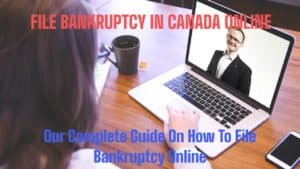
How the coronavirus pandemic pushed bankruptcy online
The bankruptcy law in Canada is a federal statute. So the Canadian government supervises the administration of the insolvency process in Canada through the Office of the Superintendent of Bankruptcy Canada (OSB). On March 13, 2020, as a result of COVID-19, the OSB provided guidance to Trustees about how elements of the process for filing bankruptcy in Canada have changed. The document issued by the OSB is called Temporary Guidance for LITS During the COVID-19 Pandemic.
In that guidance, the OSB pushed the Canadian insolvency system as close to how can you file bankruptcy online. The only thing you still cannot do is file bankruptcy online yourself.
There was great growing concern in Canada about COVID-19. Insolvency practitioners had to take action to reduce in-person meetings. The OSB supported the Trustee community in these initiatives while keeping the stability of Canada’s insolvency system.
The OSB encouraged Trustees to make use of the considerable flexibilities that exist in the OSB’s Directives when determining which measures may be appropriate, in light of the pandemic.
To allow for the necessary social distancing, while still allowing people to file bankruptcy in Canada, the OSB advised the Trustee community:
- Assessment of a person’s or company’s financial situation – Trustees are allowed to make use of techniques besides in-person meetings. The OSB recognized the COVID-19 pandemic as a remarkable circumstance.
- Trustees did not need to get separate approval to conduct assessments making use of techniques aside from in-person. Where a video conference is not feasible, evaluations and discussions about a person’s or company’s debt situation may be carried out through a mix of telephone discussion and email.
- In these assessment meetings, we discuss various debt relief options and alternatives to bankruptcy to avoid bankruptcy. We talk about credit counselling sessions, debt consolidation, debt settlement, various financial management techniques. We even discuss is a debt consolidation loan a realistic prospect?
- Then we move on to the insolvency remedies of a consumer proposal for financial reorganization and debt settlement, corporate financial reorganization, personal bankruptcy or corporate bankruptcy. Whatever is appropriate. Then we give the person our recommendations and help them pick the best solution for them. The aim is always to avoid bankruptcy, wherever possible.
- Insolvency financial counselling – Trustees and the accredited credit counsellors in their office are allowed to give financial management counselling via video conferencing. The OSB also allowed for credit counseling over the telephone, when video conferencing is not feasible. That is how I have been doing each credit counselling session and it has been working very well.
- Meeting of Creditors – The Chair of the meeting is now allowed to hold creditors’ meetings either by video or conference call. The Chair can count on the representations by those in attendance to confirm their identity. It is mainly the unsecured creditors who are interested in the meeting of creditors.
- Oaths and Signatures: Filing for bankruptcy and the bankruptcy process, involves bankruptcy forms. We are now urged to trade bankruptcy paperwork using e-mail. Trustees also explain to anyone filing bankruptcy, be it personal bankruptcy or corporate bankruptcy, using video conferencing.
- This also the case for a consumer proposal filing. So even though we are not sitting in the same room as the person, we give the debtor the required support to explain the bankruptcy forms by using Zoom, FaceTime or over the phone.
What I do for taking oaths is that I confirm the person’s name and ask them to hold up their birth certificate or driver’s licence to their webcam or mobile phone. I also watch them sign the official bankruptcy documents. Then, I ask them to scan everything, including the identification they used, email it to me right away and then put the originals in the regular Canada Post mail.
So far, this has worked quite well. It has allowed people to file bankruptcy in Canada even during a pandemic. It has worked so well, we are now helping people and entrepreneurs looking for debt relief options who otherwise could not travel to our office. They would not travel to see us in person because although they are in Ontario, they are not in the Great Toronto Area.

Trustees already use an online bankruptcy filing system
Once the Trustee receives the documents by email from the person, they then turn to the electronic online bankruptcy filing system. It is called the E filing system. The Trustee can upload certain computer files into the E filing system, to tell the OSB all the information it needs to issue the Certificate of Appointment.
It is the same system across the country, regardless of what province you are in when someone wants to file bankruptcy in Canada. When the OSB issues the Certificate, that is the moment when a person or company officially becomes bankrupt and the Trustee is appointed.
This same E filing system is used also for all filings. Things like a consumer proposal, corporate receivership and corporate restructuring filings are also uploaded through the same online portal.
File bankruptcy in Canada: The rest of the process is the same as before
Once the type of online bankruptcy or consumer proposal filing is made to help you with the debt solutions you need, the rest of the process is the same. How bankruptcies work in Canada from this point on is not really different, other than as stated above, the two mandatory counselling sessions are done by either video or telephone meeting. Also, the effect on someone’s credit report is the same.
To find out the information on how the overall process works when you file bankruptcy in Canada, take a look at my Brandon’s Blog – HOW TO FILE FOR BANKRUPTCY IN CANADA: PERSONAL BANKRUPTCY MODUS OPERANDI. That will give you a very good read on the entire process.
File bankruptcy in Canada online: A word of warning
A word of caution for you. Bear in mind at the beginning I told you that only a Trustee is licensed to do any insolvency filing in Canada. You should understand that to file bankruptcy in Canada or file a consumer proposal online in Canada with someone that is not licensed by the federal government as a Trustee isn’t a choice.
You must be aware of fake organizations, firms, or service providers that attempt to trick people right into believing they can do any kind of insolvency filing for you. This includes anyone wanting to file bankruptcy in Canada.
Sadly, there are many debt consultant bankruptcy scam artists that state that they can help you do a debt settlement for you for a fee. DO NOT think of them under any circumstances. All they do is charge you for the first bankruptcy assessment of a person’s financial situation that a Trustee will do for you at no cost.
Then they try to offer you more items that the state will certainly help improve your credit score. This may also include giving you a high-interest rate loan but holding back all the cash to make the monthly payments out of until gone. Then when they cannot sell you any more products, they walk you down the block to file with a Trustee either to do a consumer proposal or to file bankruptcy in Canada.
Do not fall for these scammers that make it seem like they can file bankruptcy in Canada for you.
File bankruptcy in Canada summary
I hope you have enjoyed this file bankruptcy in Canada Brandon’s Blog. Do you or your company have too much debt? Are you or your company in need of financial restructuring? The financial restructuring process is complex. The Ira Smith Team understands how to do a complex restructuring. However, more importantly, we understand the needs of the entrepreneur or the person who has too much personal debt.
You are worried because you are facing significant financial challenges and you think the only thing you can do is file bankruptcy in Canada. It is not your fault that you are in this situation. You have been only shown the old ways that do not work anymore. The Ira Smith Team uses new modern ways to get you out of your debt troubles while avoiding bankruptcy. We can get you debt relief freedom.
The stress placed upon you is huge. We understand your pain points. We look at your entire situation and devise a strategy that is as unique as you and your problems; financial and emotional. We know that we can help you the way we take the load off of your shoulders and devise a debt settlement plan.
We know that people facing financial problems need a realistic lifeline. There is no “one solution fits all” approach with the Ira Smith Team. Not everyone has to file bankruptcy in Canada. We help many people and companies avoid bankruptcy.
That is why we can develop a restructuring process as unique as the financial problems and pain you are facing. If any of this sounds familiar to you and you are serious about finding a solution, contact the Ira Smith Trustee & Receiver Inc. team today.
Call us now for a free consultation.
We will get you or your company back on the road to healthy stress-free operations and recover from the pain points in your life, Starting Over, Starting Now.
We hope that you and your family are safe and healthy.
The Ira Smith Trustee Team is absolutely operational and Ira, in addition to Brandon Smith, is readily available for a telephone consultation or video meeting.
